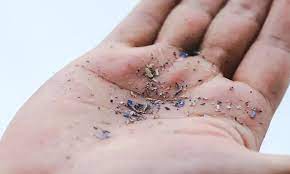Microplastics In Human Heart : China

A team of scientists in China recently found microplastics in the human heart for the first time.
- Microplastics are tiny bits of various types of plastic found in the environment.
- They are a result of the fragmentation and degradation of larger plastic items, as well as the direct release of tiny plastic particles, often intentionally added to consumer products like cosmetics and cleaning agents.
- The name is used to differentiate them from “macroplastics” such as bottles and bags made of plastic.
- There is no universal agreement on the size that fits this bill — the S. NOAA (National Oceanic and Atmospheric Administration) and the European Chemical Agency define microplastic as less than 5mm in length.
- There are two categories of microplastics: primary and secondary.
- Primary microplastics:
- They are tiny particles designed for commercial use, such as cosmetics, as well as microfibers shed from clothing and other textiles, such as fishing nets.
- They enter the environment directly through any of various channels—for example, product use, unintentional loss from spills during manufacturing or transport, or abrasion during washing.
- Secondary microplastics:
- They are particles that result from the breakdown of larger plastic items, such as water bottles.
- This typically happens when larger plastics undergo weathering, through exposure to, for example, wave action, wind abrasion, and ultraviolet radiation from sunlight.
- Primary microplastics:




